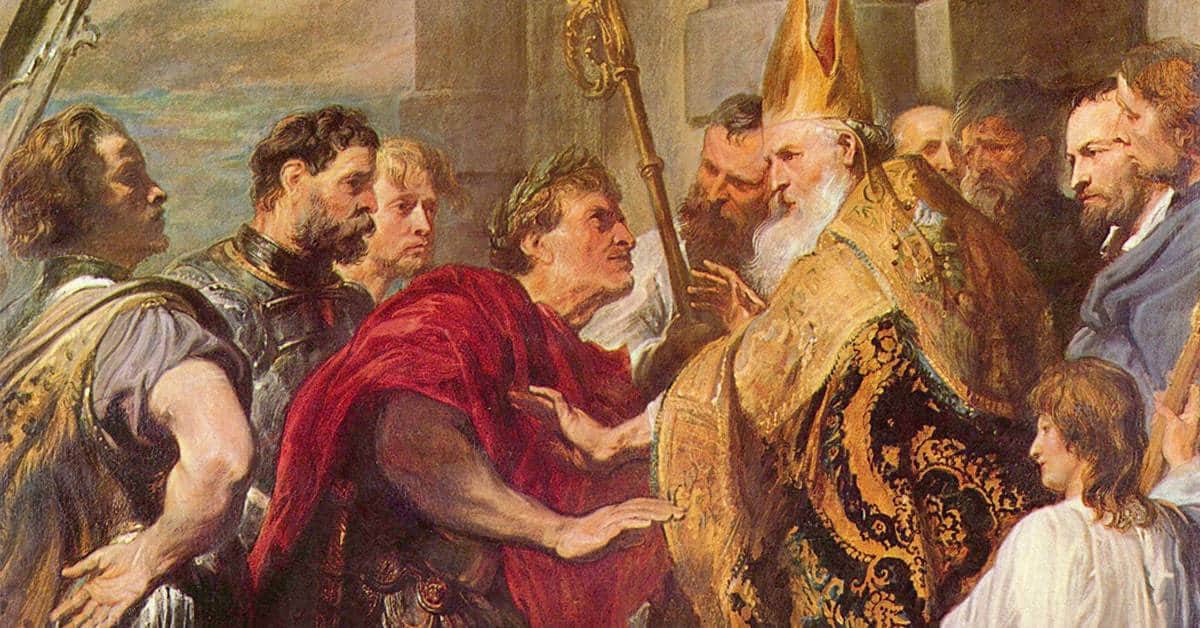For a little over two and a half years, Theodosius I ruled over both the Western and Eastern halves of the Roman Empire. Upon his death in 395 AD, his sons, Honorius and Arcadius, took over the East and West halves respectively; no one ever ruled both parts of the Empire again although a few tried to claim it after the death of Julius Nepos in 480. Theodosius inherited an Empire on the cusp of ruin and through grueling and expensive civil wars and weak successors; he did little to improve matters.
Early Life
Theodosius was born in Spain in 347 and was the son of Theodosius the Elder, a high-ranking military officer serving in the Western Roman Empire. Young Theodosius served on his father’s staff in Britannia, and he was involved in the quelling of the Great Conspiracy of 368 which involved a rebellion by several barbarian tribes.
In 373, he became the governor of Upper Moesia and was involved in fighting against the Sarmatians and Alemanni. It is possible that Emperor Valentinian I dismissed Theodosius from command after he suffered a couple of defeats against the Sarmatians. When the Emperor died suddenly in December 375, there was complete chaos in the Western part of the Empire.
Theodosius the Elder was executed in 376; possibly because he chose the wrong side in the power struggle that ensued after Valentinian’s death. The younger Theodosius realized that it would be expedient to make himself scarce during the period of political intrigue. He knew that his Spanish roots made him a target for persecution, so he fled to his estates in Spain.
When the emperor died, his sons, Valentinian II and Gratian who co-ruled the Western part of the Empire while Valens ruled the East, succeeded him. The Empire was plunged into further turmoil with the death of Valens at the Battle of Adrianople in 378. He foolishly attacked the enemy without waiting for Gratian to arrive and lost two-thirds of the army in the process.

An Unexpected Opportunity
Valens had died on 9 August 378, and Gratian became Emperor in the East. He unexpectedly called Theodosius to his court and promoted him to the rank of commander-in-chief of the army. The East was in the midst of the Gothic War (376 – 382), and Gratian realized that he was unable to resolve the situation. Shockingly, on 19 January 379, he promoted Theodosius once again, this time to the rank of Augustus. Just three years after the execution of his father, Theodosius was now the Emperor of the Eastern Roman Empire. Meanwhile, Gratian returned to Rome to govern the West with his brother.
Theodosius began forming a new army from his HQ in Thessalonica. He forced farmers to join the military and also bought the services of mercenaries from beyond the Danube. Some farmers mutilated their thumbs to avoid being drafted, but Theodosius made them join anyway. After a stalemate that lasted for four years after Adrianople, the Romans and Goths reached a peace settlement on 3 October 382. Theodosius agreed to allow the Goths to settle in the Empire under their own laws. In return, the Goths would provide troops and receive annual food subsidies. For now, Theodosius was emperor in name only, but that was about to change.

